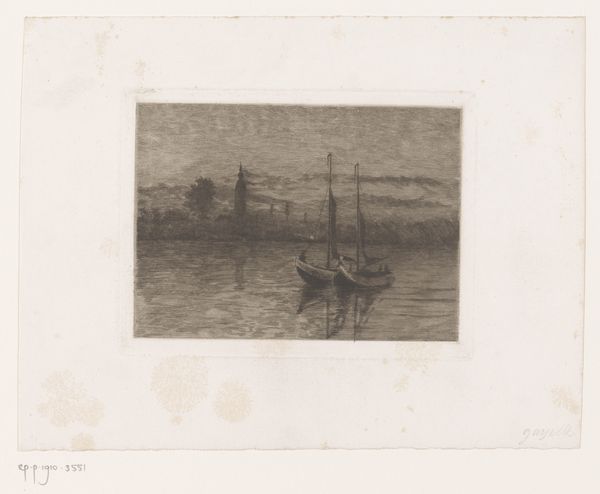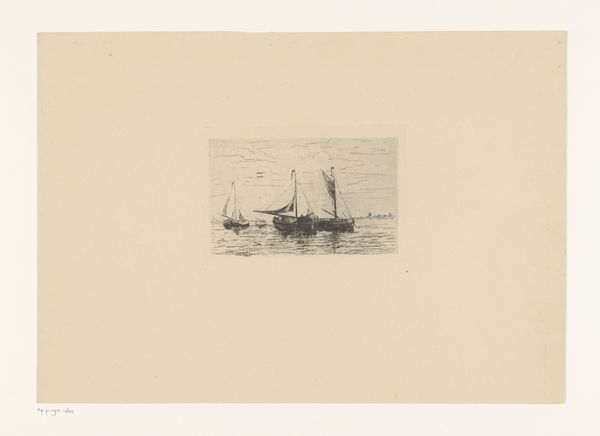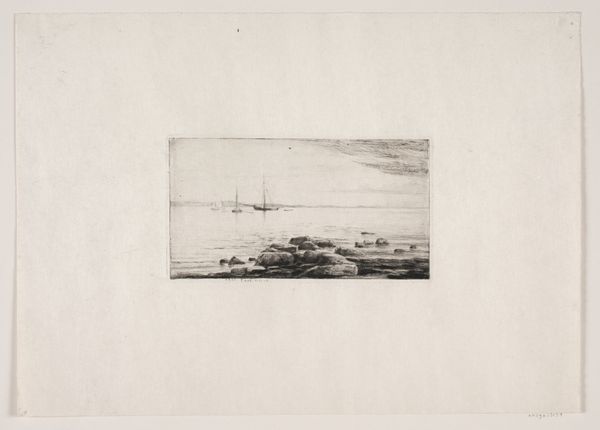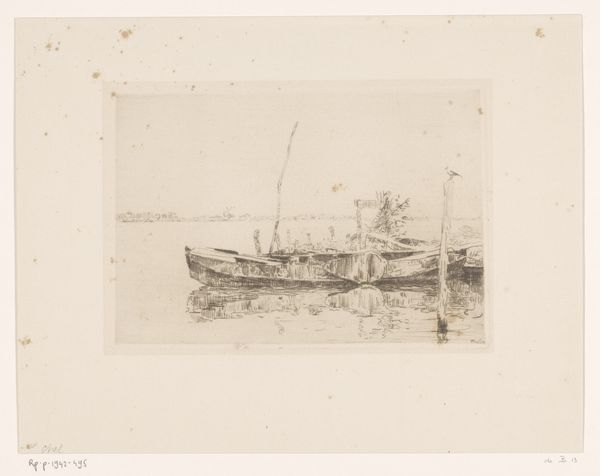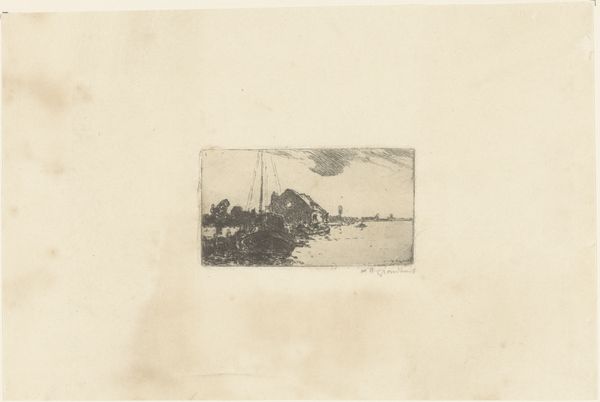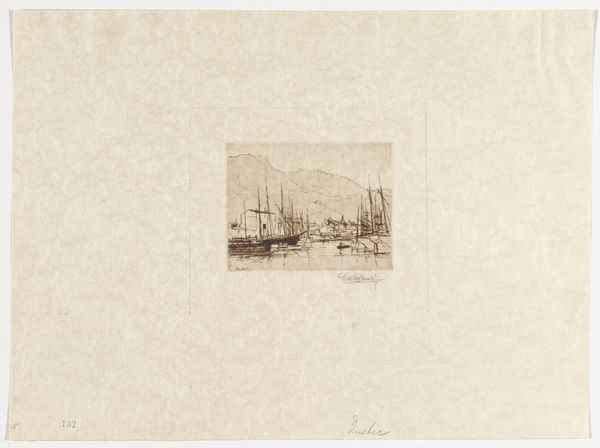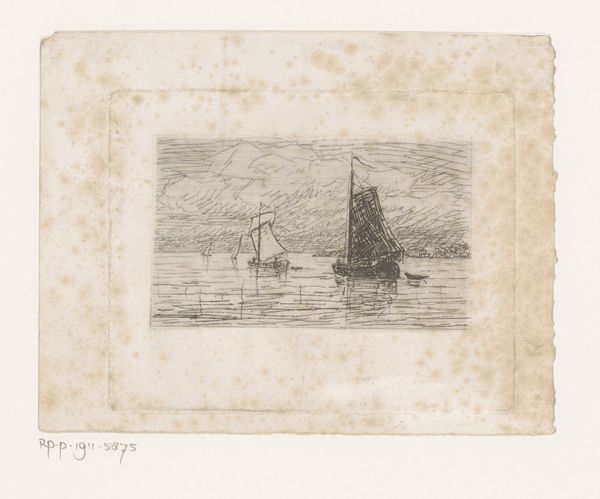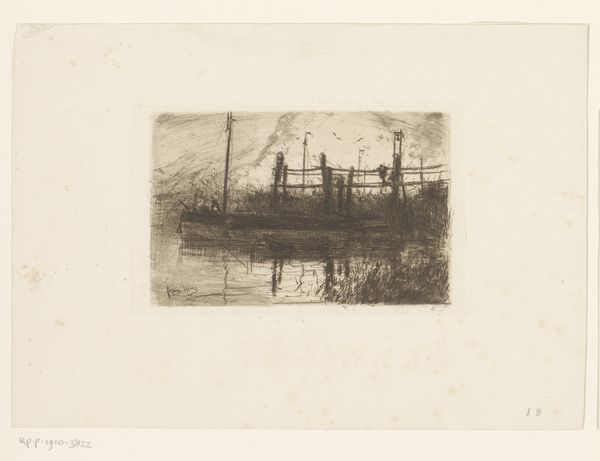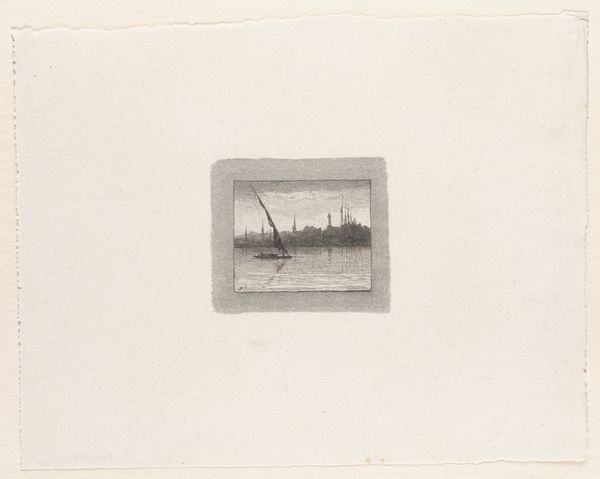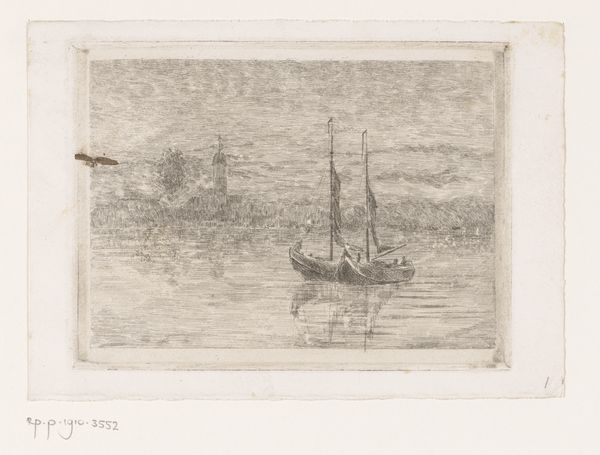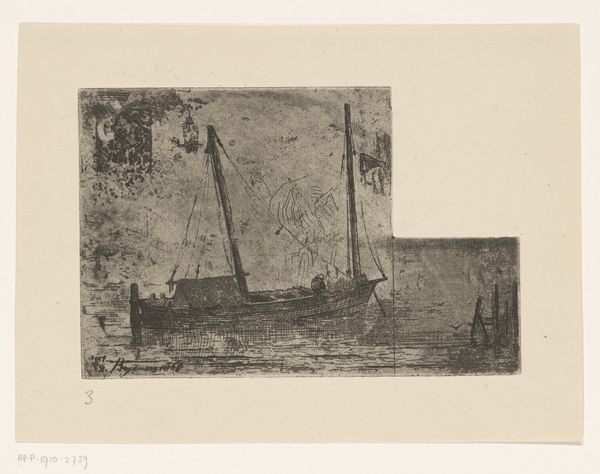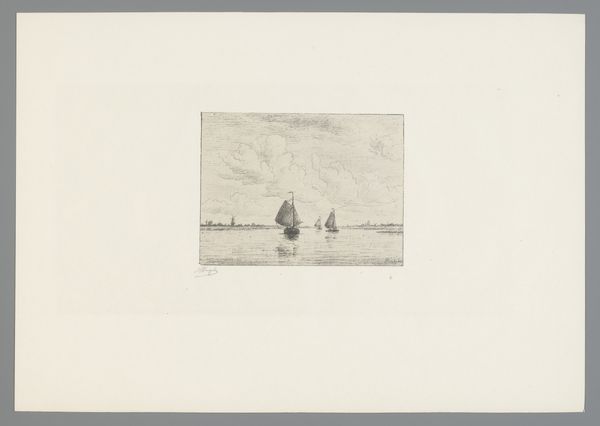
Dimensions: 4 1/8 x 4 7/8 in. (10.48 x 12.38 cm) (plate)6 7/8 x 9 7/16 in. (17.46 x 23.97 cm) (sheet)
Copyright: Public Domain
Editor: This is "Four Boats on the Canal," an etching by John Henry Twachtman, potentially from the late 19th or early 20th century. It's so delicate! The scene feels calm, almost hazy. What stands out to you, structurally? Curator: The artist's skillful use of line is immediately apparent. Note the deliberate variation in the weight and density of the etched lines. How does the composition guide the eye, in your estimation? Editor: I see how the vertical masts are contrasted by the horizontal lines of the canal's edge. But everything feels very subtly rendered, soft, rather than clearly defined. Is that a compositional strategy? Curator: Precisely! Twachtman uses the etching technique to create tonal variations that mimic the effect of light on water. Consider the distribution of dark and light areas. Observe the mirrored reflections of the boats and masts on the canal's surface, achieved with a very economical deployment of line. Do these reflections enhance or distract from the piece, do you think? Editor: I think they make it—without the reflection it might feel static, like we're only seeing *things*, rather than the dynamic relationship *between* those things, the water, and the light. Curator: Indeed. Twachtman masterfully uses the etching medium to dissolve the solidity of forms. It makes me reflect on how an artist’s technique informs the atmosphere conveyed within a piece. Editor: I'm understanding the role of technique here so much better—it really is crucial. Curator: Indeed. Every formal decision has a consequence to the experience of the artwork.
Comments
No comments
Be the first to comment and join the conversation on the ultimate creative platform.
